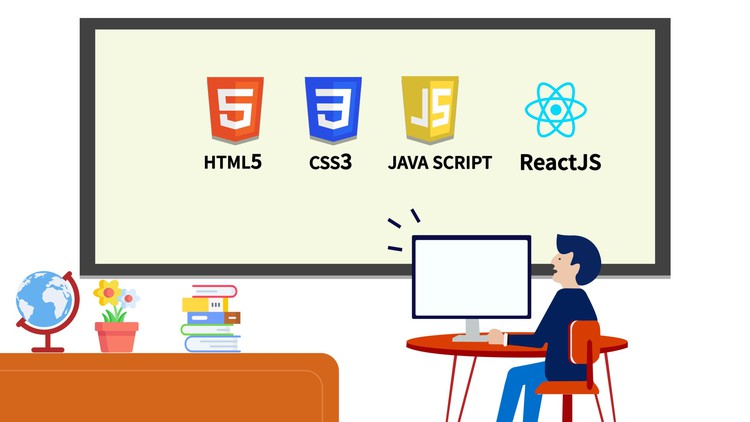
Get started as a front-end web developer with HTML, CSS, JavaScript, React.JS, and more!
What you will learn
Learn the fundamentals of HTML and CSS, including tags, attributes, selectors, and styles.
Learn how to create responsive layouts using CSS Grid and Flexbox.
Learn how to use JavaScript to add interactivity to your web pages, including event listeners, DOM manipulation, and basic animations.
Introduction to React and its core concepts: Learn the basics of React, including components, props, state, and lifecycle methods.
Building scalable and reusable components with React: Learn how to build complex and reusable components using React, including conditional rendering, event han
Working with APIs to fetch and display data: Learn how to use APIs to fetch and display data on your web pages
Learn how to carve out a career in frontend website development and the necessary skills to learn to continue on this path
Learn how to design quality websites using HTML and CSS
Learn how to create amazing front-end UIs with React!
You’ll learn the very fundamentals of JavaScript to building modern and complex applications
You’ll learn all you need to know to become an experienced, self-assured, and up-to-date JavaScript developer
Description
Are you interested in learning the skills and tools required to create modern, interactive, and responsive websites? The Front-End Web Developer Bootcamp: HTML, CSS, JS & React is the perfect course for you! In this comprehensive Bootcamp, you’ll learn HTML, CSS, JavaScript, and React – the building blocks of the web – and gain hands-on experience in creating dynamic and engaging web pages from scratch.
This course is designed for beginners who are interested in pursuing a career in web development or simply want to learn how to create beautiful and functional websites. Throughout the course, you’ll work on a series of practical projects that will allow you to apply your knowledge and skills to real-world scenarios. By the end of the course, you’ll have a portfolio of projects to showcase your skills to potential employers or clients.
Here are just a few of the benefits of enrolling in The Front-End Web Developer Bootcamp: HTML, CSS, JS & React:
- Gain In-Demand Skills: Front-end web development is a highly sought-after skill in today’s job market. By mastering HTML, CSS, JavaScript, and React, you’ll be well-positioned to land a job in a rapidly growing field. According to the Bureau of Labor Statistics, the employment of web developers is projected to grow 8% from 2020 to 2030, much faster than the average for all occupations.
- Learn from Expert Instructors: Our experienced instructors have years of experience in the field and are passionate about sharing their knowledge with you. They created this course to help you progress at your own pace and achieve your goals.
- Hands-On Learning: The best way to learn front-end web development is through hands-on experience. That’s why this course emphasizes practical projects that simulate real-world scenarios. By the end of the course, you’ll have a solid understanding of the tools and techniques used by professional web developers.
- Build a Portfolio: As you complete projects throughout the course, you’ll build a portfolio of work that showcases your skills to potential employers or clients. This portfolio will demonstrate your ability to create responsive and engaging websites, which is essential in today’s job market.
- Join a Community: Learning front-end web development can be challenging, but it doesn’t have to be lonely. By enrolling in this course, you’ll join a community of like-minded individuals who are passionate about web development. You can also share ideas, and collaborate with other students.
What are You Waiting for? Become a top Front-End web developer today!
The course is enjoyable, engaging, and interactive, which means it does not consist of introductory lectures that go over your head but rather a more hands-on approach to the subject. The material is kept light and enjoyable by the clever and experienced educator.
Content